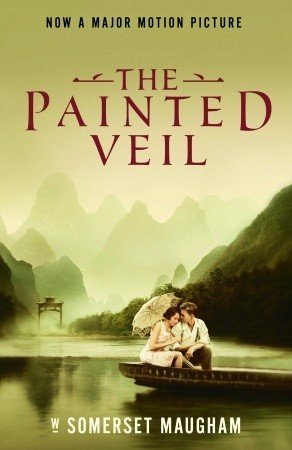The Painted Veil by W. Somerset Maugham
Review of The Painted Veil by W. Somerset Maugham
The Painted Veil by W. Somerset Maugham (1925). Published by Vintage.
I feel like, especially as I flip through my Goodreads and this book blog, that I spend a lot of time reading too much contemporary literature. I can acknowledge that I need to diversify when it comes to the kinds of books I’m reading as it pertains to when they’re published.
Pre-1980s books tend to slip off of my radar, especially in an industry where things are going pretty rapidly. It always feels like something new is coming out to distract us, even though I’ve been loving the books I’ve been reading lately.
That said, I became aware of this issue pretty recently, and realized I wanted to diversify my reading list even further. It’s kind of hard when you’re someone who tends to read books from minority populations, as before a certain period a lot of languages aren’t translated and we get a lot of colonial literature.
It was diving deeper into colonial literature that I began reading The Painted Veil. Had I heard of this novel before I picked it up? No. I found it in the depths of my local library, nor had I heard of the novel. But I saw it was published in 1925 and took place in the colonial period, and I was curious to see how these colonial subjects were depicted.
Let's get into the review then, shall we?
A woman is tangled up in affairs as she moves from England to colonial Hong Kong.
In this novel, the main character is Kitty Farstin, who, at the age of 25, needs to be married soon or she’ll be seen as leftovers. Her mother is worried about her marriage prospects, especially as Kitty has denied marriage proposals from so many worthy candidates.
It’s her mother who convinces her to marry Walter Fane, despite her thinking they probably might not be the best match. Kitty only agrees to it when she realizes her younger sister might upstage her and marry someone first, and so she rushes into the marriage despite being obviously hesistant.
Walter has been stationed to go to Hong Kong, and so Kitty goes with him to Asia. It’s there she meets Charlie Townsend, the assistant colonial secretary who immediately catches her eye. They begin an affair pretty quickly, and it lasts for two years before Walter starts realizing something is up between them.
However, Kitty and Charlie decide to keep going, as they think he won’t do anything to avoid a major scandal in their society. Kitty realizes that Walter is fully aware of what is going on, and despite Charlie thinking he won’t do anything about it, she starts noticing that he’s acting differently.
Eventually, he does confront her, and gives her a choice between divorce or moving to the mainland of China, which is dealing with a cholera outbreak. This is the beginning of the end for Kitty, who realizes that Charlie won’t do anything for her in the long run, and she returns home to find all of her belongings packed.
It’s here in China that Kitty is going to discover more about herself. She befriends the local people, especially the local nuns who are working with sick and orphaned children, and then she comes to realize that she has worth beyond the men in her life. She still doesn’t love Walter, even as the situation worsens.
She finds out she is pregnant, and it is probably Charlie’s kid. Walter dies of chloera soon after, and she returns to Hong Kong. Charlie’s wife insists she stay with them, despite Charlie trying to seduce her. We then see her growth as she is disgusted with him after the fact, then chooses herself.
Kitty goes to England, dedicating her life to her father and his work, and heads to the Caribbean with her child.
Overall Thoughts
Sometimes I find the language of older novels to be too archaic, but this is one of those novels that really struck me as feeling like it could be happening in the contemporary world, minus the colonial undertones.
We don’t get much of the colonial world outside of the colonizers interacting within it, so as someone who did graduate school study on colonialism and how it’s depicted in literature, I find this novel to not be going too much outside of the standard conventions of the period.
However, Kitty’s journey is interesting to me, as she’s a woman slowly coming to realize she can be who she wants to be (albeit still in a limited way), and stands up for herself towards the end of the novel. In other ways, she adheres to the strict social attitudes of the period.
All in all, I found this to be an interesting novel to study. Go read it if you’re interested in the premise. It’s not too long, and took me about two hours to finish.
Follow me below on Instagram and Goodreads for more.












